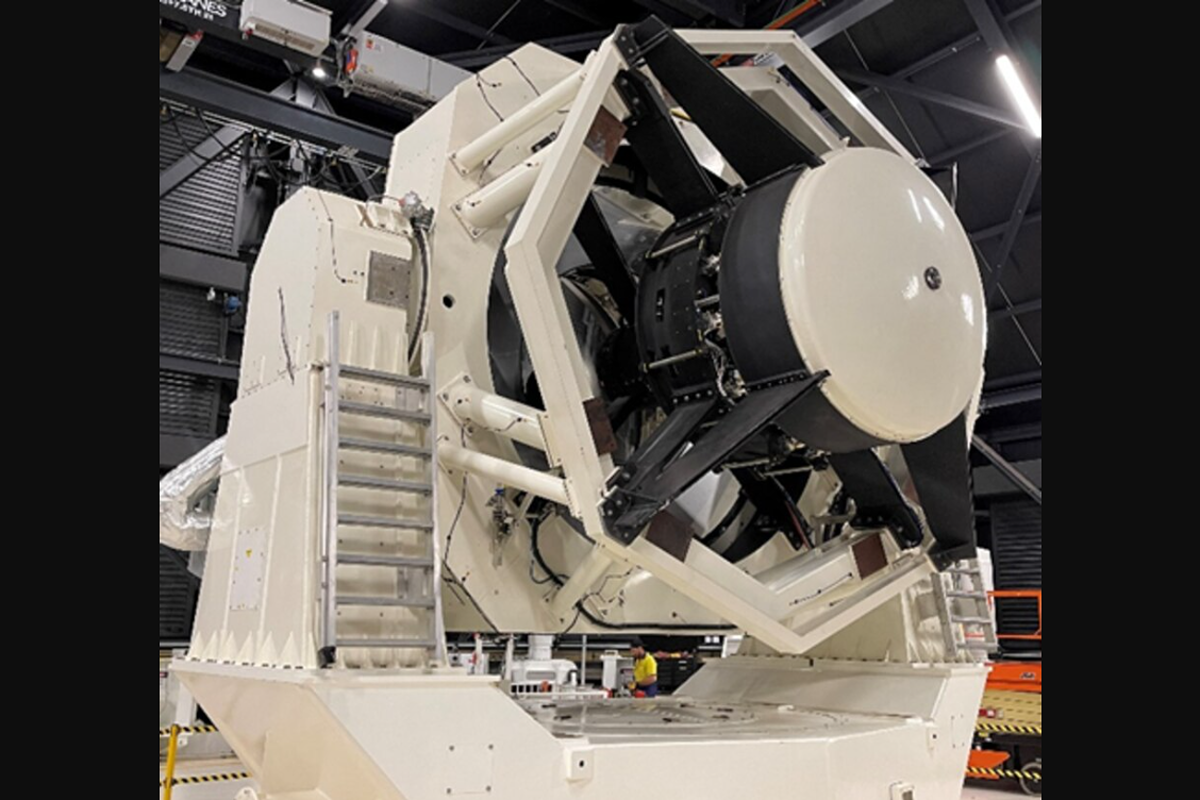Space Force telescope will hunt foreign spacecraft, asteroids and comets too
The military surveillance telescope is permanently relocated to Australia after a few years of testing in the United States.

A relocated military telescope is ready to scan the skies.
The U.S. Space Force says its Space Surveillance Telescope (SST) is operational in Australia, providing a new perspective on the sky to look for foreign spacecraft, space debris and astronomical objects of interest.
The telescope — which saw first light in 2011 and underwent years of testing — is now ready for work in the southern hemisphere, where it will join the global Space Surveillance Network for the United States and its allies, Space Force officials said in a Sept. 30 statement.
Related: US Space Force establishes new unit to track 'threats in orbit'
While its primary mission is looking for foreign spacecraft (or space debris) orbiting the Earth, the telescope can be repurposed for other astronomical observations. SST can track "faint objects in deep space to help predict and avoid potential collisions, as well as detect asteroids and comets," according to the Space Force statement.
The telescope was tested at White Sands Missile Range in New Mexico between 2011 and 2017 with the Defense Advanced Research Projects Agency, or DARPA. After being handed over to the U.S. Air Force in 2017, the military decided to redeploy the telescope to Australia in 2020, according to Space News.
SST is retasking at a time when space debris is becoming a pressing policy problem for the United States. Commercial providers such as SpaceX are sending thousands of Starlink satellites into orbit, increasing the chances for potential collisions. (SpaceX has argued Starlink satellites can dodge in case of trouble.)
Breaking space news, the latest updates on rocket launches, skywatching events and more!
Adding to the satellite swarm issue, a Russian anti-satellite test (ASAT) in November 2021 created a large plume of debris that haunted the orbit of the International Space Station for a while. Much of the swarm is still out there, and has also come close to Starlink satellites in their orbit.
Space Force joins NASA, the Federal Communications Commission (FCC), and Vice President Kamala Harris (who chairs the National Space Council) among the government partners taking steps to address space debris in recent months. Among other actions, the FCC recently updated its debris rules, and Harris pledged that the United States would not conduct destructive ASAT tests of its own.
SST can see as high as geosynchronous orbit, Space Force says. The telescope is now situated at Naval Communication Station Harold E. Holt on the northwest coast of Australia to assist that country's space domain awareness efforts, along with aiming to improve overall coverage of U.S. geosynchronous monitoring, Space Force added.
Follow Elizabeth Howell on Twitter @howellspace. Follow us on Twitter @Spacedotcom or Facebook.

Elizabeth Howell (she/her), Ph.D., was a staff writer in the spaceflight channel between 2022 and 2024 specializing in Canadian space news. She was contributing writer for Space.com for 10 years from 2012 to 2024. Elizabeth's reporting includes multiple exclusives with the White House, leading world coverage about a lost-and-found space tomato on the International Space Station, witnessing five human spaceflight launches on two continents, flying parabolic, working inside a spacesuit, and participating in a simulated Mars mission. Her latest book, "Why Am I Taller?" (ECW Press, 2022) is co-written with astronaut Dave Williams.
